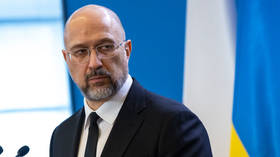Spending and saving in Russia: Ivan Svitek, HCFB

With bank deposits slowing in recent months and people spending more, Business RT talked to Ivan Svitek, head of the board at Home Credit and Finance Bank (HCFB), about what factors are driving spending and saving trends in Russia.
RT: Is the outlook expected to see continued expansion of consumer spending?What are the risks to that outlook?IS:“I expect some growth of saving sentiment. But this won’t necessarily mean lower propensity to spend. Spending sentiment may grow due to lowering inflation, provided Russians become more confident in the future and with unemployment going down. I don’t expect consumer sentiment to be growing further without a simultaneous aspiration to save.”RT: Is it becoming easier to provide lending for consumer loans? (in terms of the process, the ability to risk manage lending to the Russian public, and the ability to fund consumer loans) IS: “We observe positive trends in consumer market development driven not only by consumer ability to take loans, but banks’ ability to provide them. According to Russian Public Opinion Research Centre, or VCIOM, the consumer market is reviving but hasn’t reached pre-crisis level. HCFB has a 9-year experience on working on Russian market and we have expertise of including risk management, processes, funding and the level of service.”
RT: Russian consumers have traditionally been cash spenders.Are they becoming more used to credit?IS: “I can’t say that Russians got used to credits, because living in debt is not a Russian style of living. Another reason is that there are still a lot of cities in Russia without any banking services at all. That’s why it is still a very prospective market.”RT: Russian deposits according to the central bank have slowed.What is driving this? IS:“The most considerable factor causing slowing deposit growth is the inflation rate, which has been high since the beginning of this year. At the current date, the CPI is 9.4% year on year. In accordance with the forecast which was officially approved by Russian government, the CPI rate by the end of the year will have been at the level of 6.5 – 7.5%, and the slowing of CPI is expected to begin in July. As a result, we expect that the deposit growth will come soon.” RT: To what extent does that reflect stronger confidence in the economy by consumers? IS: “Well, the consumer confidence usually isn’t reflected by the deposit amount growth. To assess consumer confidence we used the retail turnover rate, which is high enough and the unemployment rate, which is decreasing. Survey research, made by Public Opinion Foundation (FOM), definitely shows that people this year were tending to spend more than to save, but from the middle of May the situation has begun to change. The survey research, made by Russian statistic agency, showed that since the second quarter people in Russia have been looking at the future more optimistically and as a result they want to make savings or large purchase more gladly.” RT: Are alternative savings tools (other than deposits) becoming more popular? IS: “The most popular saving tools in Russia traditionally are deposits and cash in roubles and in foreign currencies, as it was confirmed by our common research with ROMIR.In 2011 alternative ways of saving (i.e. jewelry as well as gold, corporate securities, mutual funds, etc.) indeed became more popular than they were in the past, but the leading trio of saving tools is still intact. But our research was done among the active internet users in big Russian cities.”RT: Do Russians need to be encouraged to save more and how could this be achieved?IS: “I guess that if the economic situation continues to improve Russians will be encouraged to save by themselves. Of course, further development as well as improvement of banking service quality will promote them and as a result encourage people to save more money in banks. Moreover deposit interest rates are tending to raise and it is another reason for people to save.”
James Blake, Anastasia Kostomarova, RT













